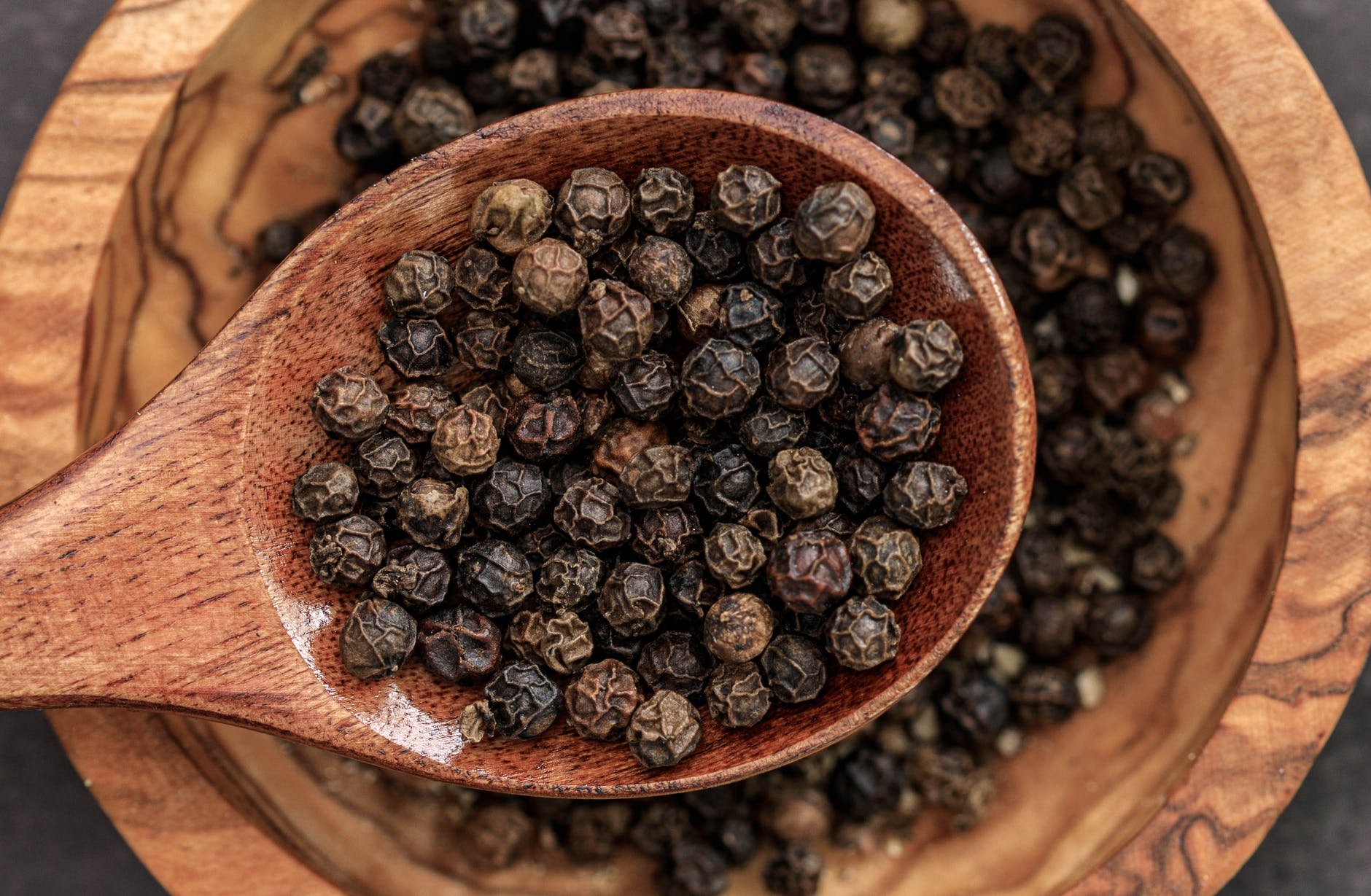Origin of Black Pepper
Black pepper (Piper nigrum L.) is perhaps the most traded and the most commonly used spice in the world. Besides its use in culinary/food in cultures globally, black pepper has been used for medicinal and cosmeceutical products since time immemorial. Native to Kerala, a south-western state of India, Black pepper now cultivated in various tropical regions of the world including India, Malaysia, Indonesia, Thailand, Vietnam, China and Sri Lanka, Madagascar and Brazil (Damanhouri and Ahmad, 2014).
Botanical Classification of Black Pepper
The scientific classification of Black pepper (Piper nigrum L.) is as follows:
- Kingdom: Plantae (the plants)
- Subkingdom: Tracheobionta (the vascular plants)
- Superdivision: Spermatophyta (seed producing plants)
- Class: Magnoliopsida (Dicotyledons or Dicots)
- Order: Piperales
- Division: Magnoliophyta (Angiosperms or flowers producing plants)
- Family: Piperaceae (Pepper family)
- Genus: Piper L. (pepper)
- Species: Piper nigrum L. (black pepper)
Black Pepper Fruits
Black pepper plant is a flowering vine that develop fruits in clusters called the peppercorns which are about 5 mm in diameter, green colored when unripe and dark red when fully mature. The fruit of black pepper contains a single seed and the fruit is described more precisely as black pepper (cooked and dried unripe fruit), green pepper (dried unripe fruit), and white pepper (ripe fruit seeds).

Phytochemical Ingredients of Black Peppers
Black pepper’s spiciness originates from its most active and a pungent phytochemical constituent called Piperine. The latter should not be confused with the Capsaicin which is found in chili peppers. Piperine is marketed as Bioperine® in the medicinal and dietary supplements world. Besides its most active ingredient i.e. Piperine, black pepperalso contains volatile oils, oleoresins, and alkaloids.
Black Pepper& Bioavailability of Drugs
Biochemical and physiological studies have established Piperine’s effects on p-glycoprotein and many enzyme systems, resulting into biotransformative effects which includes, but not limited to, chemoprevention, detoxification, and enhancement of the absorption and bio-availability of dietary supplements and conventional allopathic drugs. A classical-example of synergistic interaction of black pepper with other drugs/nutrients is its effects on enhancing the bio-availability of Curcumin, the most active ingredient of Turmeric/Curcuma longa L rhizomes. Curcumin is most potent natural antioxidant known to the history of mankind but its usability is limited because of its poor bio-availability from Curcumin’s rapid metabolism in the hepatic and intestinal tissues. Shoba et al 1998 exploited the inhibitory potential of piperine of hepatic and intestinal glucuronidation biotransformation system and evaluated the bio-availability of Curcumin with our without Piperine administration in rats and healthy human volunteers. This study showed that concomitant administration of Piperine with Turmeric can increase the bio-availability of Curcumin by up to 2000%. This fact is really useful when it comes to the benefits of Turmeric Curcumin dietary supplements.
*Key Health Effects of Black Pepper
Black pepper also shows synergistic interaction with several different drugs and nutrients. Meghwal and Goswami, 2013, and Butt et al 2013 reviewed multiple studies and documented Black pepper (Piper Nigrum L.) to exert the following biological and medicinal activities*:
- Anti-Alzheimer’s
- Anti-amoebic properties
- Anti-asthmatic
- Anti-carcinogenic
- Anti-depressant
- Anti-epilepsy
- Anti-inflammatory
- Anti-microbial
- Anti-oxidant
- Anti-ulcer
- Gastroprotective, Detox
Scientific References
- Meghwal M, Goswami TK. 2013. Piper nigrum and piperine: an update. Phytother Res. 27(8):1121-30 [PMID: 23625885; DOI: 10.1002/ptr.4972]
- Butt MS, Pasha I, Sultan MT, Randhawa MA, Saeed F, Ahmed W. 2013. Black pepper and health claims: a comprehensive treatise. Crit Rev Food Sci Nutr. 53(9):875-86 [PMID: 23768180; DOI: 10.1080/10408398.2011.571799]
- Damanhouri ZA, Ahmad A. 2014. A Review on Therapeutic Potential of Piper nigrum L. (Black Pepper): The King of Spices. Med. Aromat. Plants. 3:161. doi: 10.4172/2167-0412.1000161.
- Shoba G, Joy D, Joseph T, Majeed M, Rajendran R, Srinivas PS. 1998. Influence of piperine on the pharmacokinetics of curcumin in animals and human volunteers. Planta Med. May;64(4):353-6 (PMID: 9619120; DOI: 10.1055/s-2006-957450).
*Disclaimer: Indian Food Simplified DOES NOT PROVIDE MEDICIAL ADVICE, DIAGNOSIS OR TREATMENT. The contents of the IndianFoodSimplified.com website, such as text, videos, graphical diagrams, images, and ANY other posts (“CONTENT”) posted by Indian Food Simplified team and its associates are for an informational and educational purposes ONLY. The CONTENT of this website is NOT FOR medical, diagnostic or treatment purpose, and should NOT be considered directly or indirectly as a medical advice. ALWAYS seek necessary professional advice from your physician, doctor or other qualified health provider about any questions you may have regarding wellness issues or medical conditions. NEVER disregard or delay seeking a professional medical advice because of something you have read or watched on Indian Food Simplified’s website or other pages including YouTube channel. Reliance on ANY information provided through CONTENT by Indian Food Simplified’s team is solely at your own risk.Indian Food Simplified’s owner and affiliated team members can NOT be held responsible for any issues or damage arising from any content found on IndianFoodSimplified.com & its associated platforms. Under NO conditions or circumstances Indian Food Simplified will be responsible for ANY CONTENT, including but NOT limited to, ANY inaccuracies in the CONTENT.

